Our favourite Final Fantasy towns, from Lindblum to Cosmo Canyon
We want to live in all of them.
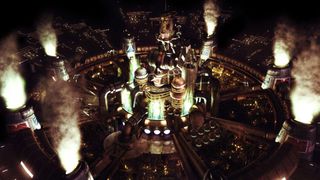
Each Final Fantasy may feature wildly different settings, stories, characters, and combat systems, but there are a few elements that keep the series consistent. Magic, summons, chocobos, moogles, stupidly large swords, costumes laden with belts, and, of course, towns. These cities, villages, and other settlements give you a break from your adventure; somewhere to regroup, heal, stock up on supplies, and learn more about the world. They're usually the most memorable locations in each game, and here are some of our favourites.
Lindblum — Final Fantasy IX
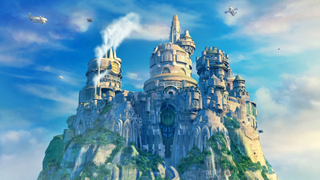
Andy K: After the relatively understated, almost contemporary world of Final Fantasy VIII, the ninth Final Fantasy saw a massive shift in tone and aesthetic. Final Fantasy IX is chunky, colourful, and more reminiscent of the earlier, medieval-influenced games; a change exemplified by the grand city of Lindblum. What I always remember about this place is how big it feels. Towns in this series often seem curiously small, considering how many people are supposed to live there, but this genuinely feels like a vast, bustling, lively metropolis. It has an impressive sense of verticality too; you'll often see the rest of the city in the background, reaching high into the clouds.
Nibelheim — Final Fantasy VII
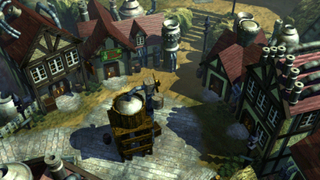
Andy K: This remote mountain village is the setting for some pretty dramatic moments in Final Fantasy VII, including that brilliant flashback sequence involving Sephiroth and a young Cloud. Or was it Zack? Visually it's a pretty standard RPG village, but when Cloud visits again as an adult, the place suddenly turns sinister. The place was supposed to have burned down, but Cloud finds it mysteriously rebuilt, actors pretending to be the villagers who died, and cloaked Sephiroth clones mumbling about some kind of reunion. It's brilliantly creepy, making Nibelheim one of VII's most memorable locations.
Balamb — Final Fantasy VIII
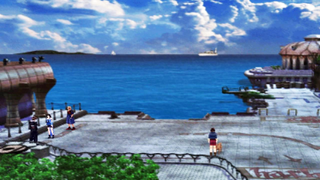
Andy K: This idyllic coastal village is one of the most peaceful places you visit in Final Fantasy VIII. As you explore the cobbled streets you hear the waves lapping on the beach, perfectly complemented by Nobuo Uematsu's lovely track Breezy. It captures the sleepy, relaxed feel of a small seaside town and I love spending time here. The hotel is a standout location, with its curiously organic, art deco-style architecture. And, of course, Balamb Garden is just up the road, which remains one of the coolest locations in the series.
Lestallum — Final Fantasy XV
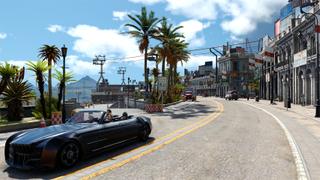
Samuel: This is the only area in FFXV's open world that just about counts as a town. As well as having a lovely marketplace and an outdoor cafe, its architecture reminds me of my holidays to small towns in mainland Europe, and it overlooks the meteor held by Titan at the centre of the world. I've got some affection for the tiny settlements along the way, but Lestallum is the only stop in XV's vast landscape that actually feels like a populated place. Altissia, of course, is very nice too—but since it's not connected to the rest of the world, exploring it feels a little more rigid.
Deling City — Final Fantasy VIII
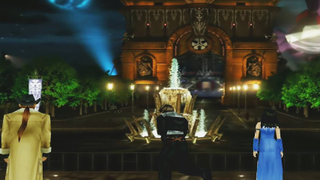
Andy K: With its wide boulevards, opulent hotels, and grand arches, it's clear Deling City is inspired by Paris. What I love about the art in Final Fantasy VIII is how it's contemporary, but with a subtle fantasy edge. You've probably visited somewhere like Deling City before, but the organic architectural flourishes and weird typography quietly remind you that you're in another world. After the relatively small towns of Dollet and Balamb, visiting Deling City feels like stepping into a much bigger world; and the Galbadian soldiers on the streets reinforce the idea of being somewhere dangerous, behind enemy lines.
Costa del Sol — Final Fantasy VII
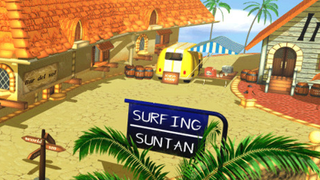
Andy K: This beach resort seems curiously normal in Final Fantasy VII's world of magic and monsters, but that's one of the reasons I love it. After defeating Jenova on the Shinra cargo ship, this is your reward: a sunny, pleasant town to stroll around, talking to surfers, listening to that super chill music, and enjoying some well-earned downtime. I also like how if you return after Sephiroth has summoned his world-ending meteor, you can talk to the sunbathers on the beach and they reveal that they've decided to spend their last days on the planet drinking cocktails on the beach. Man, that's how I wanna go.
The biggest gaming news, reviews and hardware deals
Keep up to date with the most important stories and the best deals, as picked by the PC Gamer team.
Narshe — Final Fantasy VI
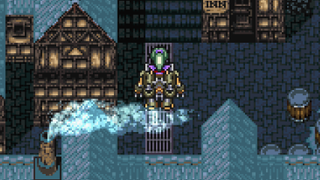
Samuel: I'm partly picking Narshe because it's the opening location of Final Fantasy 6 and it's been 14 years since I played it, meaning my memory is a little fuzzy. Compare this snowy town to the simple locations seen in FFIV, though, and you'll see just how advanced Squaresoft's 2D art became during the SNES generation—the detailed frontage on each building gives them a lot of character.
Timber — Final Fantasy VIII
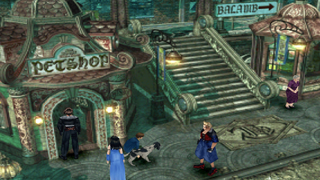
Andy K: Timber is probably my favourite Final Fantasy town. I particularly love that beautiful blue/green colour palette and how it feels like an old European city retro-fitted with strange, exotic modern architecture. I love the atmosphere too. It's a city under martial law, with the oppressed citizens quietly rebelling against the Galbadian occupiers. Notable locations include the offices of Timber Maniacs, a revolutionist newspaper, and the Aphorora Pub, where the drinks are all named after the chocobo greens from Final Fantasy VII.
Cosmo Canyon — Final Fantasy VII
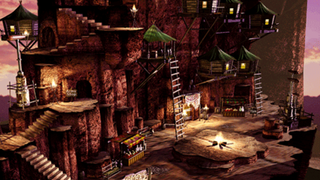
Andy K: In terms of layout, Cosmo Canyon is one of the more unique Final Fantasy towns. The city wraps around, and tunnels through, a towering desert mesa, culminating in an observatory at the peak. Inside you find cosy shops, homes, and communal areas carved into the rock, and at the top you get a panoramic view of the night sky and surrounding desert. It's a fittingly dramatic setting for some of Final Fantasy VII's biggest plot reveals. The backstory of party member Red XIII, which reveals his origins, is great too—and kinda heartbreaking. And, as is the case with every Final Fantasy town, Nobuo Uematsu's music really helps define the atmosphere of the place.
Besaid — Final Fantasy X
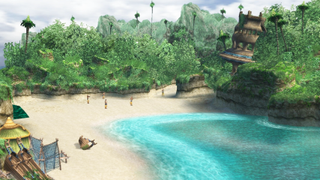
Andy K: None of the towns in Final Fantasy X really make me that nostalgic, although I do love Besaid. This tropical island is your introduction to the world of Spira and has a similar laid-back feel to Final Fantasy VII's Costa del Sol. I think it's the music I love more than anything else. While some fans were initially concerned that composers other than Uematsu would be contributing to the Final Fantasy X soundtrack, Besaid Island by Masashi Hamauzu is a beautiful piece of music, bringing a lot to the island's atmosphere.
Rabanastre — Final Fantasy XII
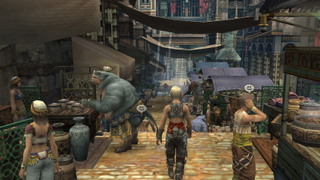
Samuel: FFXII's opening city is vast-feeling compared to the truncated locations in something like FFX, XV or XIII-2. It's sort of a collision of Star Wars' Mos Eisley and an ancient Middle Eastern city—it's got a nice tavern where you take on bounties (the Sandsea), a little marketplace, and even a populated indoor region. On PC, with the textures cleaned up a bit from the blurry PS2 release, Rabanastre makes a spectacular first impression.
Midgar — Final Fantasy VII

Andy K: You spend a good chunk of time in Midgar before you're set free on Final Fantasy VII's world map. It's a city of two levels: the 'plate' above, where the wealthy and privileged live, and the ramshackle slums below it. But the slums are the heart of the city: particularly Wall Market, a shopping and entertainment district where you challenge a wrestler to a squat competition and get tangled up in the business of Don Corneo, a local crime boss. Midgar is a perfect microcosm of VII's divided, polluted, and corrupt world, and the perfect place to introduce the eco-warriors AVALANCHE. When the plate falls later in the game, crushing part of the slums, it's genuinely devastating.
Treno — Final Fantasy IX
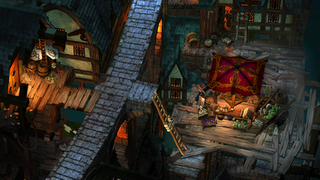
Andy K: It's always night in Treno, making it one of the most atmospheric cities in Final Fantasy IX. The ambience suits the fiction too: this is a divided city, with nobles living by the waterfront and the poor crammed into slums. I remember the first time I visited Treno and how different it felt from the other towns. The city is surrounded by a circular stone wall and has canals running through it, separating the upper and lower classes. There are a few important locations here including the auction house and the card stadium, although I can't say I ever enjoyed Tetra Master as much as Triple Triad.
Icicle Inn — Final Fantasy VII
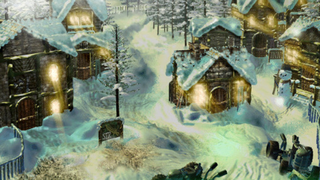
Andy K: This winter resort town is the polar opposite of the sun-soaked Costa del Sol. Nestled atop a freezing mountain, the settlement is made up of a series of Alpine-style log cabins. I've always loved the way the warm light coming from inside the cabins streams out of the windows, making them feel like inviting, cosy little escapes from the chilling wind. Icicle Inn isn't as dramatic as some of the other towns in Final Fantasy VII, but it has its own special atmosphere. As for the snowboarding minigame, well, the less said about that the better.
If it’s set in space, Andy will probably write about it. He loves sci-fi, adventure games, taking screenshots, Twin Peaks, weird sims, Alien: Isolation, and anything with a good story.
Most Popular


